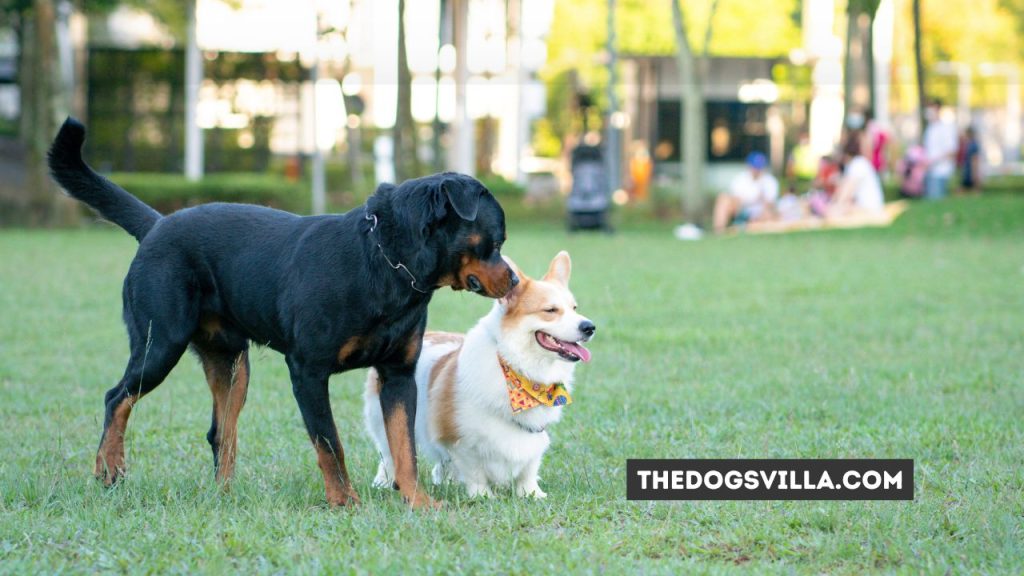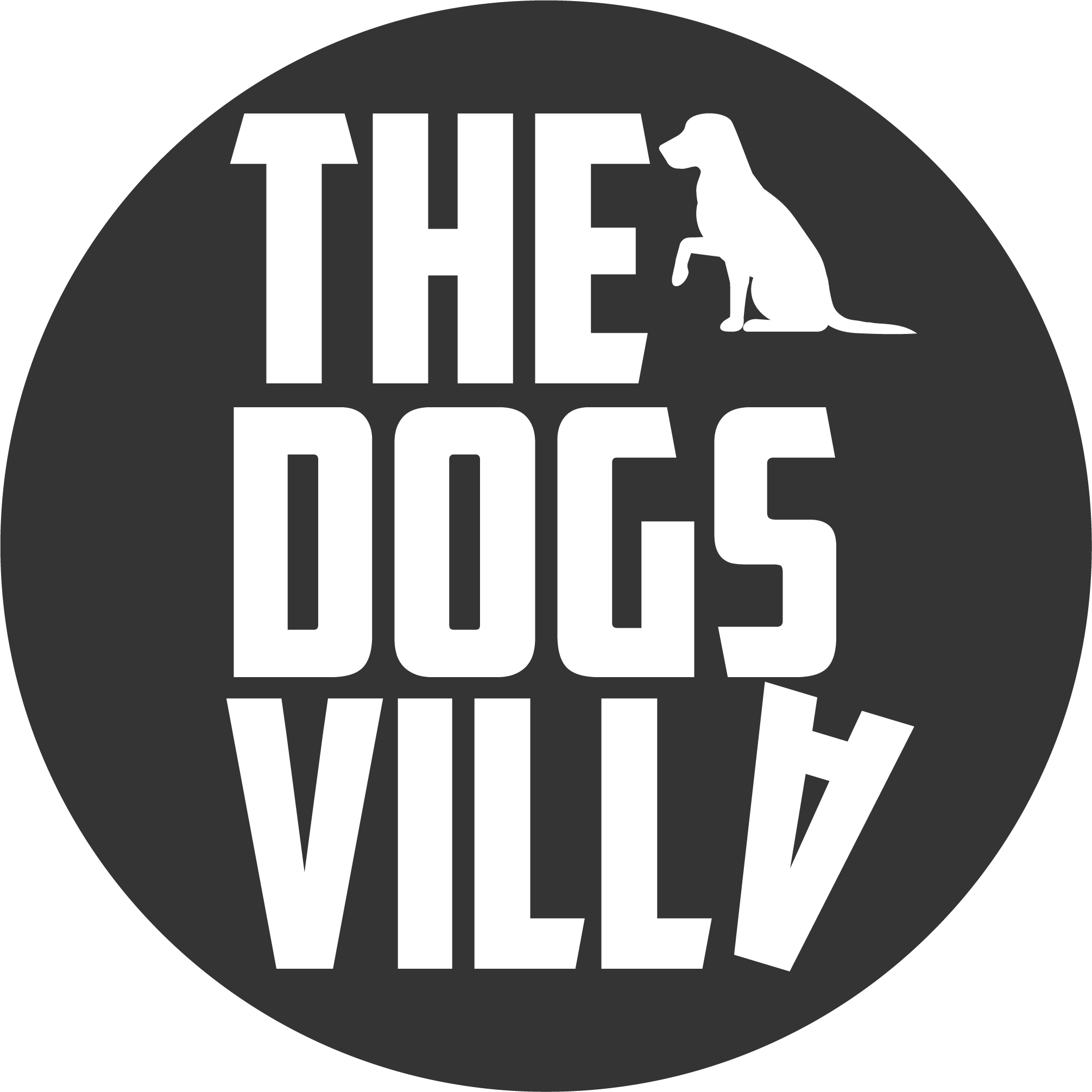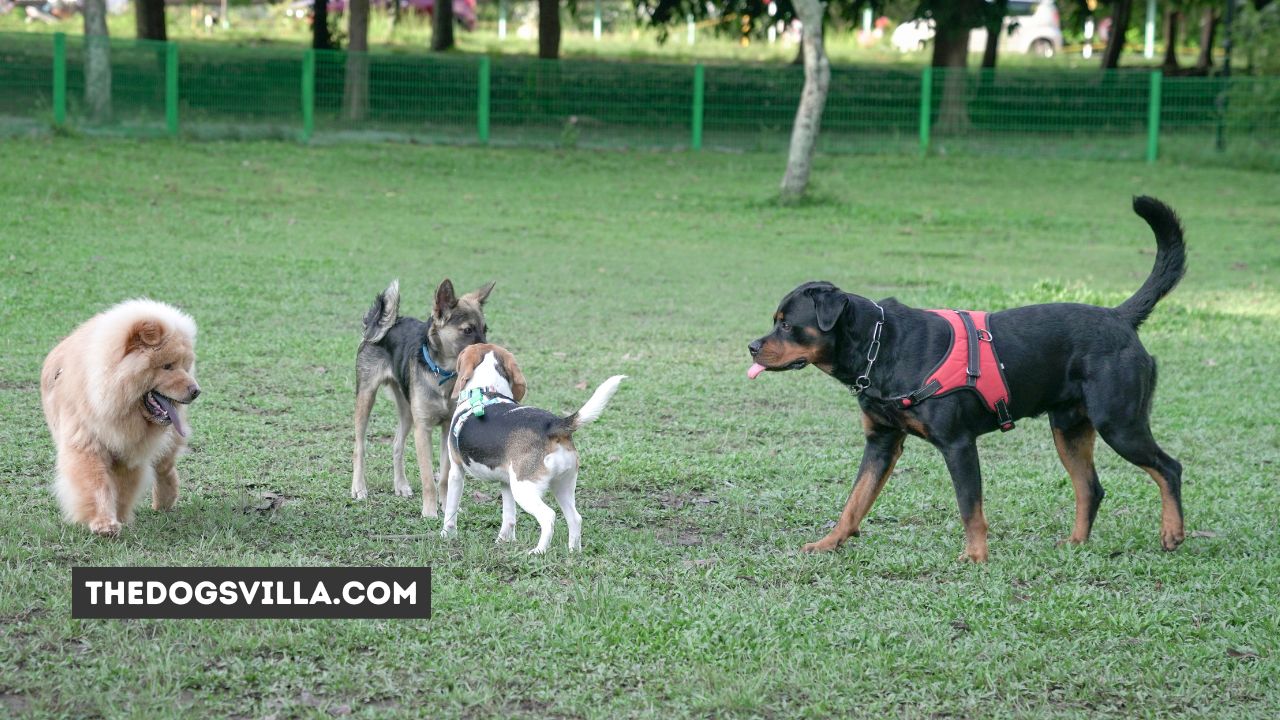Despite intimidating reputations, properly nurtured Rottweilers thrive as steadfastly loyal companions. However diligent socialization taming protective wariness ensures your trainable guardians coexist amenably within family units, avoiding dangerous territorialism or hostility with strangers.
Implementing structured exposure techniques introduced early and often allows Rottweilers distinguishing welcomed friends from threatening intruders. When socialized correctly interpreting appropriate cues, these obedient devoted partners flourish defending beloved owners without arbitrary viciousness.
Contents
- 1 How to Socialize a Rottweiler
- 2 Adult Rottweiler Socialization Training
- 3 Set Structure Enabling Success
- 4 Handling Techniques Optimizing Control
- 5 Off Leash Precautions
- 6 Common Socialization Setbacks
- 7 When to Request Professional Help
- 8 Maintaining Healthy Socialization Throughout Life
- 9 10 Effective Ways to Socialize a Rottweiler
- 10 FAQs: Socialization Training Essentials
- 11 Conclusion: Socialization Fosters Fulfillment
How to Socialize a Rottweiler
Rottweiler socialization demands prioritizing brief positive encounters during developmental prime windows under 16 weeks old when most receptive retaining lifelong impressions.
Expose to Environments
Shuttle calm pups in carriers or carts through various settings including:
- Urban sights: Traffic, buildings, crowds
- Home sights: Kitchen noises, lawn gear
- Community sights: Schools, shops
Transition gradually once content observing from secure vantage points. Repeat exposure solidifying acceptance.
Introduce Novel Stimuli
Inhabit empty locations allowing engagement with sights and sounds like:
- People wearing uniforms, hats, helmets
- Dogs walking at distances
- Vehicle sounds, sirens
- Clattering skateboards, bikes
- Marching band songs
- Mechanical shop sounds
Disperse tasty treats rewarding nonreactivity. Increase proximity only after acclimating from afar first. End encounters before exhaustion sets in.
Prioritize Pleasant Greetings
Guide controlled meetings with friendly sociable varieties of:
- Adults
- Kids
- Elderly individuals
- Other calm puppies
Allow curious Rottweilers approaching first, never forcing interactions. Praise gentle manners, interrupting inappropriate gnawing or rough housing immediately.
Stage Real World Practice Runs
While protected exposure allows acclimating to sights and sounds safely, real world practice remains vital through:
- On leash neighborhood walks
- Visits with trusted friends
- Calm outdoor cafes
- Home renovation store outings
Carry irresistible treats constantly reinforcing positive associations with novel stimuli by rewarding check-ins, polite greetings, relaxed body language and obedience to cues like “Leave It” and “Let’s Go” disengaging when overwhelmed.
Adult Rottweiler Socialization Training
Year-round dedicated socialization prevents fully matured Rottweilers from intensifying wariness towards unfamiliar visitors or dogs after protective instincts strengthen beyond one year old.
Reinforce Foundations
Enroll adult Rottweilers in group obedience classes surrounded by reasonable dog role models. Maintain engagement with known cues around distractions. Graduate beginner skills before adding corrections some traditional clubs mandate.
If gaps emerge not solidifying social skills properly during first year and a half, restart introductions from afar like puppies. Adult dogs still require extensive positive exposures generalizing that new sights and sounds pose no threats.
Broaden Real World Horizons
Diversify real world practice adapting foundations fluency navigating environments like:
- Home renovation stores
- Outdoor supply shops
- Cafe patios
- Harborfront parks
Vet locations ahead ensuring spacious aisles and exiting strategies. Identify pet friendly public destinations.
Always carry snacks rewarding automatic check-ins, loose leash skills and settling calmly if other leashed dogs pass by. Praise disengaging without reacting.
Set Structure Enabling Success
Balancing social opportunities with downtime prevents overstimulation heightening reactivity. Position Rottweilers succeeding through accountable structure.
| Timeline | Sample Schedule |
|---|---|
| Morning | Potty, eat, training games, brisk leashed walk |
| Afternoon | Naptime chew treats in settle areas |
| Evening | Fluency practice session, dog sport class, snuggles |
Morning Routines
- Potty/Eat: Refuel, release energy
- Training Games: Engage brains with mini obedience or tricks sessions
- Brisk Walks: Cardio without overheating exercising responses from a distance around dogs/people
Structure allows securing attention on owners instead of reacting to external chaos. Apply impulse control exercises like Leave It for squirrels.
Afternoon Resets
- Naptime: Snooze stress away in cooled settle areas
- Chew Enrichment: Redirect need to nibble on lasting toys like frozen Kongs
Lulls conservatively conserve stamina for more demanding exposure training later.
Evening Skill Polishing
- Short Solo Sessions: Reinforce waiting, eye contact, stays, hand targetingFoundation cues polish communication motivating engagement.
- Concentration Classes: Practice obedience around controlled group distractions
- Quiet Company: Decompress snuggling sans pressure performing
Balance skills momentum with relaxation preventing cognitive overload. Know limits!
Handling Techniques Optimizing Control
Expediting communication and accountability during overwhelming encounters relies on handling adaptations fine tuning directional cues.
| Equipment | Benifits |
|---|---|
| Front clip harnesses | Discourages pulling towards triggers |
| Double clip leash and harness | Ensures control if attempts lunging |
| Slip leads | Lightweight with increased steering |
| Basket muzzles | Prevents bites during early training stages |
Avoid metal choke chains and prong collars relying on pain and intimidation often intensifying reactivity.
Prioritize equipment keeping Rottweilers’ attention on owners versus aggravating stimuli. Snug fits discourage slipping escapes.
Emergency Protocols
When encountering unpredictably rambunctious dogs ignoring owners at close distances, guide your Rottweiler crossing the street asynchronously until safely passing triggers. Carry high value treats constantly reinforcing disengagement.
If interactions still erupt in tight quarters, enact emergency containment placing your Rottweiler behind you calmly until chaos clears.
Defend personal space without curling your torso downwards bending over the dog risking accidental bites redirecting escalated frustration. Stand tall using your feet providing barriers protecting them from perceived threats.
Off Leash Precautions
While Rottweilers love romping leash free exploring nature, allowing unmanaged access interactions welcoming avoidable aggression remains risky until mastering impulse control absolutely solid.
Guard Instinct Dangers
High protection drive breeds instinctually expand bubble of personal space several yards beyond yards at home. Thus even friendly loose pets entering proximity may prompt defensive charging if perceived as encroaching on guarded territory.
And once a Rottweiler’s chase drive engages explosively covering 30+ yard distances in seconds, calling off mid-pursuit proves extremely difficult regardless how reliable recall seems locally.
Evaluate Emergency Down Ranges
Carefully assess risks before allowing off leash privileges:
- Fenced isolation?
- Traffic concerns?
- Wildlife conflicts?
- Bodies of water?
- High distraction zones?
Manage location variables out of respect for dog park patrons expecting space safety checks beforehand.
Master emergency down cue recall:
Choose low distraction areas training urgency Down cues. Have assistants call your name to trigger reflexive sprint response.
Halt mid-run with strong Down commands. Praise compliantly stopping forward momentum despite barriers now removed allowing choices.
Use long lines ensuring ability forcing stops if needed until response times quicken. Don’t risk off leash freedoms prematurely with questionable compliance history.
Common Socialization Setbacks
While counterconditioning modernizes opinions through positive reinforcement, realistic habits emerge slowly. Anticipate missteps respecting the gradual process.
Common Problems and Solutions
Problem: Unsure how to greet new visitors
Solution: Secure leashed, provide approved toys as icebreaker
Problem: Pulls towards dogs lunging on walks
Solution: Cross street interrupting, praise regaining relaxed attention
Problem: Overreacts seeing unfamiliar professionals (construction crews, landscapers) during yard work
Solution: Muffle noises indoors, drowning out disturbances with classical conditioning
Prevent rehearsing unwanted reactions until troubleshooting improves manners. Protect from provoking opportunities exceeding current abilities. Signaling apology to strangers teaches accountability.
When to Request Professional Help
Seek assistance from veterinary behaviorists or certified professionals if:
- Biting breaks skin
- High bite level shakes puncture
- Escalating reactivity towards children, elderly
- Self-rewarding aggression habits resist owner efforts
Serious territorial displays beyond managing require customized systemic intervention assessing root causes and outlining step by step treatment plans.
Key Credentials Indicating Credible Help:
- Veterinary Behavioral Medicine Certification
- Certified Applied Animal Behaviorists (CAAB)
- Diplomats of the American College of Veterinary Behavior (DACVB)
Select professionals emphasizing counterconditioning over alpha roll theatrics or flooding traumatizing animals. Beware trainers over-relying on pain or intimidation potentially worsening problems.
Maintaining Healthy Socialization Throughout Life
Plan ongoing positive public adventures allowing your Rottweiler practicing rock solid obedience applying foundational skills greeting friendly strangers of all ages and body types.
Always Bring:
- Real meat training treats
- Front fastening harness
- Double clip waist leash
- Pet cleanup bags
- Updated vaccine records
Frequently refresh early socialization impressions that new sights and sounds pose no inherent threats when accompanied by caring guardians.
10 Effective Ways to Socialize a Rottweiler

Rottweilers are large, powerful dogs that are often misunderstood. With proper socialization from a young age, rottweilers can be wonderful family companions. Here are 10 effective tips for socializing your rottweiler puppy or adult dog:
-
Start Early
It’s best to start socializing rottweiler puppies as young as 2-3 weeks old. Puppies go through a critical socialization period between 3-12 weeks old. Expose puppies gently to new sights, sounds, smells, people, and other animals during this time. Create positive associations through rewards and play.
-
Use Positive Reinforcement
Always use positive reinforcement when socializing a rottweiler. Reward desired behaviors with treats, praise, or toys. Never use punishment, as this can create fear and anxiety. Mark and reward even small successes to build your rottweiler’s confidence.
-
Socialize to New People
Introduce your rottweiler to people of all ages, appearances, and backgrounds. Start with calm individuals before moving to more unpredictable ones. Children should be supervised and taught how to properly interact. Reward your rottweiler for remaining calm around strangers.
-
Socialize to Other Dogs
Socialize your rottweiler to balanced, friendly dogs. Go on walks together and reward polite greetings. Avoid dog parks until your rottweiler has solid skills. Always supervise interactions and separate dogs if issues arise. Proper socialization can prevent aggression toward other dogs.
-
Socialize to New Places
Gradually expose your rottweiler to new environments like busy streets, pet stores, parks, and more. Bring tasty treats and make it fun. Start with short trips before progressing to longer outings. A well-socialized rottweiler should be comfortable in public.
-
Enroll in Training Classes
Obedience classes provide structured socialization with other dogs and people. Learning basic cues also increases control during social experiences. Training class prepares your rottweiler for good manners in public. Private lessons can further shape social skills.
-
Provide Mental Stimulation
A mentally stimulated rottweiler is less likely to develop problem behaviors. Provide interactive toys, food puzzles, scentwork, agility equipment, and training games daily. A tired dog is a well-behaved social companion. Mental exercise also strengthens the bond with you.
-
Exercise Regularly
Give your rottweiler adequate daily exercise to prevent hyperactivity and frustration. Long walks, play sessions, or jogging will help your rottweiler channel energy appropriately with others. Proper exercise is crucial for a calm, focused social temperament.
-
Socialize to Noises
Get your rottweiler accustomed to noises like vacuums, doorbells, traffic, crowds, and more. Start with soft volumes and mild exposures. Reward calm responses and very gradually increase the intensity. A desensitized rottweiler will remain composed in noisy environments.
-
Hire a Trainer
For ongoing socialization or any emerging behavioral issues, don’t hesitate to contact a certified professional dog trainer. They can provide individualized guidance on your rottweiler’s socialization. A skilled trainer will help ensure your rottweiler grows into a well-adjusted companion.
FAQs: Socialization Training Essentials
What’s the easiest method socializing my Rottweiler?
Consistently tandem hand feeding pieces of chicken, cheese or beef as visitors enter home space while leashed prevents lunging towards guests once puppies outgrow jumping up. Food motivation conditioned to associate newcomers with good things enables gradual tension release rewriting first impressions. Let pups approach calmly if desired after establishing initial positive links lessening perceived threats.
Can Rottweilers safely play with small dogs at the dog park?
Allow size differences mean Rottweilers may accidentally bowl tiny counterparts over via rambunctious play style, carefully evaluate attendants rotating through dog parks first. Visit only off peak hours with mellow polite regulars known maintaining friendly moderated interactions. If confronting over aroused participants, guide your Rottweiler away politely before tension escalates. Always reinforce disengaging without reacting when managing social skills still developing.
My adult Rottweiler barks aggressively seeing neighboring dogs on our property line. What should I do?
Teach “Look at me” visual checks ins request redirecting attention back to owners when sparked by triggers. Praise engaged eye contact then guide away diffusing territorial stress. Report unrestrained loose dogs trespassing if recurring issue. Install temporary fencing reinforcing perceived boundaries until impulse control improves. Always reward silent observance, never yelling exacerbating reactivity.
How do I introduce my Rottweiler to a new baby joining our family?
Acclimate ahead through recordings of baby sounds. Muffle levels preventing alarming. Bring blankets smelling of baby powder and lotion. Secure dogs during first live interactions. Discourage jumping or toys sharing. Hand feed treats rewarding gentle manners. Establish separate nursery zone early on. Always directly supervise visits allowing safe positive exposures under controlled conditions.
Conclusion: Socialization Fosters Fulfillment
Socialization forms the cornerstone determining if Rottweilers thrive as suitable active companions coexisting peacefully or mutate into unstable time bombs endangering communities. While protective instincts run intensely through their bloodlines, properly nurtured Rottweilers blessed with broad social education far exceed stereotypes classifying them exclusively as dangerous sentinels banning integration. Meeting marshmallowy therapy Rottweilers overjoyed soaking up affection from elderly home residents or pediatric hospital patients proves all breeds deserve opportunities showcasing their best attributes when supported accordingly.
While their commanding presence deters would-be threats, realistic management accepts rarely will true protection needs arise in suburbs or cities where most now reside. With devoted diligence socializing Rottweilers extensively, preventatively through positive experiences welds links differentiating trigger types, ensuring ultimate family guardians may relax knowing households overflow already with friendly welcoming faces.
Additional Socialization Resources:
Certified Applied Animal Behaviorists
ASPCA Managing Leash Reactivity

